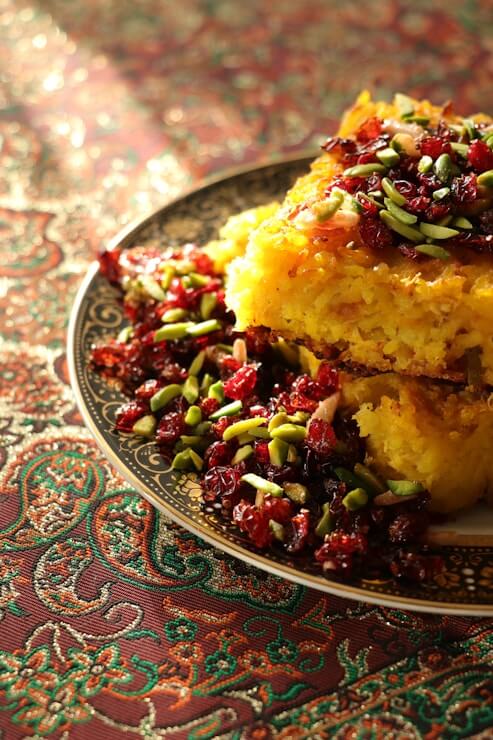Turkish cuisine is a vibrant tapestry of flavors, colors, and textures, deeply rooted in a rich cultural heritage. While often celebrated for its succulent meats, Turkey also offers an incredible array of vegetarian dishes that are both wholesome and indulgent.
From hearty stews to fresh salads and savory pastries, vegetarian Turkish recipes showcase the bounty of fresh vegetables, legumes, aromatic herbs, and warming spices.
Whether you’re a seasoned vegetarian or just looking to explore something new, these recipes bring the magic of Turkey’s culinary traditions right to your kitchen.
In this blog post, we’ll dive into some classic vegetarian Turkish recipes that are perfect for anyone craving authentic flavors without meat.
These dishes are easy to prepare, packed with nutrition, and guaranteed to please both vegetarians and meat-eaters alike.
So, get ready to tantalize your taste buds with the colorful, fragrant, and satisfying world of vegetarian Turkish cooking!
Why You’ll Love This Recipe
Vegetarian Turkish recipes offer a delightful blend of simplicity and sophistication. They emphasize fresh, seasonal ingredients combined with aromatic spices like cumin, paprika, and sumac, creating layers of flavor without overwhelming the palate.
These dishes are naturally healthy, often featuring fiber-rich legumes, antioxidant-packed herbs, and nutrient-dense vegetables.
Moreover, vegetarian Turkish food is incredibly versatile. You can enjoy these recipes as light appetizers, hearty main courses, or even as side dishes.
Whether you’re hosting a dinner party or cooking a cozy meal for yourself, these recipes bring warmth and authenticity to your table. Plus, many dishes can be made ahead or adapted to your personal taste, making them a convenient choice for busy cooks.
Ingredients
| Ingredient | Quantity | Notes |
|---|---|---|
| Bulgur wheat | 1 cup | Fine or medium grind |
| Chickpeas | 1 can (15 oz) or 1 cup cooked | Drained and rinsed if canned |
| Eggplants | 2 medium | Firm and fresh |
| Tomatoes | 3 large | Ripe and juicy |
| Onion | 1 large | Yellow or white |
| Garlic cloves | 3 | Minced |
| Fresh parsley | 1/2 cup chopped | Flat-leaf preferred |
| Fresh mint leaves | 1/4 cup chopped | Optional but recommended |
| Olive oil | 4 tablespoons | Extra virgin |
| Tomato paste | 2 tablespoons | Concentrated |
| Lemon juice | 3 tablespoons | Freshly squeezed |
| Salt | To taste | |
| Black pepper | 1/2 teaspoon | Freshly ground |
| Ground cumin | 1 teaspoon | Optional |
| Sumac | 1 teaspoon | For garnish and flavor |
Equipment
- Large mixing bowl
- Medium saucepan
- Chef’s knife
- Cutting board
- Wooden spoon or spatula
- Measuring cups and spoons
- Colander (for rinsing chickpeas)
- Baking tray (optional for roasting eggplant)
Instructions
- Prepare the bulgur: Place the bulgur in a large bowl, cover with boiling water (about 1.5 cups), and let it soak for 15 minutes until tender but still a bit chewy. Drain any excess water, then fluff with a fork and set aside.
- Roast or sauté the eggplant: Prick the eggplants with a fork several times. You can either roast them whole in a preheated oven at 400°F (200°C) for 30-40 minutes until soft, or peel and dice them and sauté in 2 tablespoons olive oil until golden and tender. Roasting brings out a smoky flavor, while sautéing is quicker.
- Cook the aromatics: Finely chop the onion and garlic. Heat 2 tablespoons olive oil in a medium saucepan over medium heat. Add the onion and sauté for 5 minutes until translucent. Add the garlic and cook for another minute until fragrant.
- Add tomatoes and tomato paste: Dice the tomatoes and add to the pan along with the tomato paste. Cook for 8-10 minutes, stirring occasionally, until the mixture thickens and the tomatoes break down.
- Combine chickpeas and spices: Add the rinsed chickpeas, ground cumin, salt, and black pepper to the tomato mixture. Stir well to combine and cook for 5 more minutes to let the flavors meld.
- Mix everything together: In the large bowl with the bulgur, add the cooked eggplant (roasted or sautéed), tomato-chickpea mixture, chopped parsley, and mint. Stir gently but thoroughly.
- Season and finish: Add the lemon juice and adjust salt and pepper to taste. Sprinkle sumac over the top for a tangy, citrusy finish.
- Serve: This dish can be served warm, at room temperature, or chilled. It pairs beautifully with warm flatbread or as part of a mezze spread.
Tips & Variations
“For a deeper smoky flavor, try charring the eggplants directly on an open flame or grill before peeling and adding to the dish.”
If you want to amp up the protein, consider adding toasted pine nuts or chopped walnuts. For a creamier texture, dollop some plain yogurt or a vegan alternative on top when serving.
Not a fan of bulgur? Substitute with couscous, quinoa, or even cooked rice.
You can also add other vegetables like roasted bell peppers or zucchini for extra color and nutrition.
Looking for a lighter version? Use less olive oil and more fresh lemon juice to brighten the flavors.
Fresh herbs like dill or cilantro can also be swapped in depending on your preferences.
Nutrition Facts
| Nutrient | Amount per Serving | % Daily Value* |
|---|---|---|
| Calories | 280 kcal | 14% |
| Protein | 9g | 18% |
| Carbohydrates | 42g | 14% |
| Dietary Fiber | 8g | 32% |
| Fat | 7g | 11% |
| Vitamin A | 15% DV | |
| Vitamin C | 30% DV | |
| Iron | 20% DV |
*Percent Daily Values are based on a 2,000 calorie diet.
Serving Suggestions
This vegetarian Turkish dish is perfect as a main course alongside warm, fluffy pita bread or traditional Turkish flatbread called pide. Complement the meal with a fresh cucumber and tomato salad dressed in lemon and olive oil for an invigorating contrast.
For a full Turkish mezze experience, serve with Allens Green Beans Recipe, Almond Cake And Pastry Filling Recipes, or the refreshing Agua De Sapo Recipe to cleanse the palate between bites.
Conclusion
Exploring vegetarian Turkish recipes opens the door to a culinary world filled with fresh ingredients, bold spices, and wholesome goodness. This recipe highlights the best of Turkish cuisine’s plant-based side, proving that you don’t need meat to enjoy a satisfying and flavorful meal.
Whether you’re a vegetarian or simply looking to add more meatless meals to your repertoire, these dishes are a wonderful way to experience the richness and diversity of Turkey’s food culture.
Don’t hesitate to experiment with different herbs and vegetables, embracing the seasonal bounty to make these recipes your own. And if you enjoyed this recipe, be sure to check out other delicious recipes like Bahamian Macaroni And Cheese Recipe: A Tasty Delight or the indulgent Baileys Whipped Cream Recipe: A Delicious Topping for your next culinary adventure!
📖 Recipe Card: Vegetarian Turkish Stuffed Peppers (Biber Dolması)
Description: A classic Turkish dish featuring bell peppers stuffed with a flavorful rice and herb mixture. Perfect as a light main course or a side dish.
Prep Time: PT20M
Cook Time: PT40M
Total Time: PT60M
Servings: 4 servings
Ingredients
- 4 large bell peppers
- 1 cup long-grain rice
- 1 medium onion, finely chopped
- 2 medium tomatoes, diced
- 1/4 cup olive oil
- 1/4 cup chopped fresh parsley
- 2 tablespoons pine nuts
- 1 teaspoon ground cinnamon
- 1 teaspoon dried mint
- 1/2 teaspoon salt
- 1/4 teaspoon black pepper
- 1 1/4 cups vegetable broth
Instructions
- Preheat oven to 350°F (175°C).
- Cut tops off bell peppers and remove seeds.
- Heat olive oil in a pan and sauté onions until translucent.
- Add tomatoes, pine nuts, rice, cinnamon, mint, salt, and pepper; cook 5 minutes.
- Pour in vegetable broth, bring to a simmer, then remove from heat and stir in parsley.
- Stuff peppers with rice mixture and place in a baking dish.
- Add a little water to the dish, cover with foil, and bake for 40 minutes.
- Remove foil and bake 10 more minutes until peppers are tender.
- Serve warm or at room temperature.
Nutrition: Calories: 280 kcal | Protein: 6 g | Fat: 12 g | Carbs: 38 g

